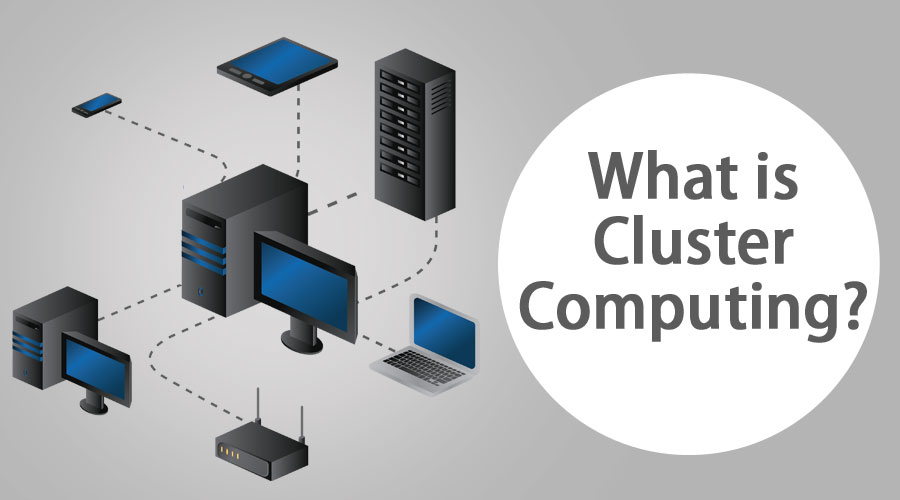Introduction to Cluster Computing
Cluster computing is the process of sharing the computation tasks among multiple computers and those computers or machines form the cluster. The cluster computing works on the distributed system with the networks. Several types of cluster computing are used based upon the business implementations, performance optimization and the architectural preference such as load balancing clusters, high availability (HA) clusters, high performance (HP) clusters. Some of the advantages of cluster computing are processing speed, cost efficiency, scalability, high availability of resources. Some of the popular implementations of cluster computing are Google search engine, Earthquake Simulation, Petroleum Reservoir Simulation, and Weather Forecasting system.
Understanding Cluster computing
Clusters are widely used with respect to the criticality of the data or content handled and the processing speed expected. Sites and applications which expect extended availability without the downtime and expecting heavy load balancing ability use these cluster concepts to a large extent.
High-Availability (HA):
Computers face failure very often. High Availability is concurrent in a straight line to our increasing dependence on computers because at the present they include a vital role mainly in companies whose most important functionality is accurately the offer of some stable computing service, such as e-business, databases, among others.
An elevated accessibility Cluster aspires to uphold the availability of services offered by a computer system by server replication and services from side to side superfluous hardware and software reconfiguration. here multiple computers stage together as one, each one observes the others and captivating their services if some among them fail. processing power loss happens here but availability is the key perspective. Fault forbearance is attained through supplies and redundant boards, also publishing alternative paths through fully connected systems which are extremely networked.
Cluster Load Balancing :
In an increased network usage and internet usage load balancing acts as a key factor within these clusters. though these clusters network capacity and increased performance are easily achieved. here all nodes remain integrated with all instances so that all these node entities are aware of the requests in their network. The systems do not work jointly in a solitary procedure but readdress requests separately as they turn up based on a scheduler algorithm. Another important factor on cluster management is scalability as it largely achieved when each of its servers is completely utilized.
During load balancing amid of servers that hold the same capability in client response, a lot of problems are raised because multiple requests may be addressed by the servers which may lead to confusion between themselves. So the element that will apply the balancing among servers and users, and construct it to do so, however, we can put multiple servers on one side that, for the customers, they appear to be only one address. A common example of these scenarios is the Linux user servers.
Types of Cluster computing
1. Load-balancing clusters: Here workload is equally distributed across multiple installed servers in the cluster network.
2. High availability (HA) clusters: A group of clusters which ensure to maintain very high availability. computers pulled from these systems are considered to be very much reliable and may not face a downtime even possibly on any instance.
3. High performance (HP) clusters: This computer networking tactic use supercomputers and Cluster computing to resolve complex and highly advanced computation problems.
Advantages of using Cluster computing
1. Cost efficiency: Compared to highly stable and more storage mainframe computers these form of cluster computing systems are considered to be largely cost-efficient and cheaper. Moreover, most of these systems offer higher performance than mainframe computer systems.
2. Processing speed: The speed of processing also equitable to the mainframe systems and other forms of supercomputers in the market.
3. Expandability: Scalability and expandability is the next key advantage of these clustered systems. because they instantiate the opportunity to add any number of additional resources or systems to the existing computer network.
4. High availability of resources: computers face failure very often. High Availability is concurrent in a straight line to our increasing dependence on computers because at the present they include a vital role mainly in companies whose most important functionality is accurately the offer of some stable computing service, such as e-business, databases, among others. Availability plays the next key role in these systems. failure of one of the currently active nodes may be passed on to the other live nodes and on receiving this message the other set of the node will operate as a proxy for the dead node. so this ensures enhanced availability of these systems.
Conclusion
Well, cluster computing a loosely connected or tightly coupled computers that effort together so that they can be worked as a single system by the end users. on top of this logic, these computing systems ensure sustained performance and availability which make these computers vastly popular and client attractive in these competitive markets.





